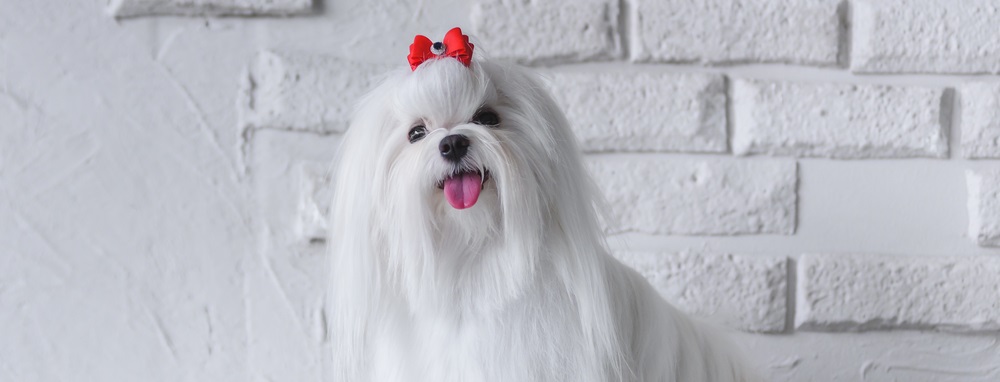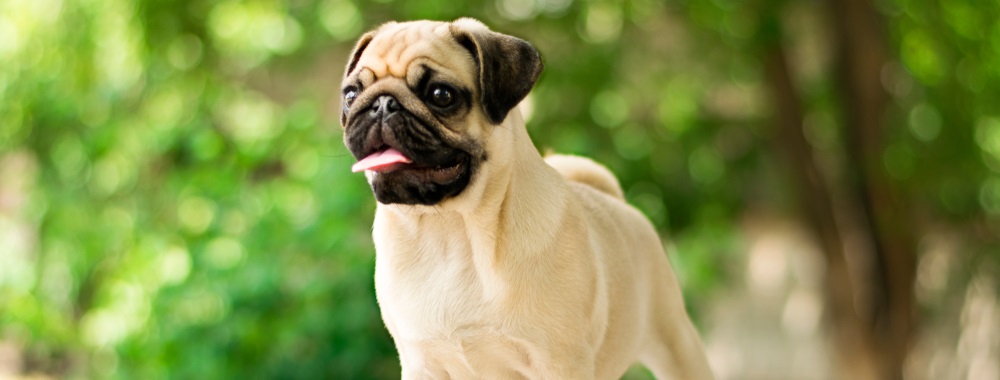You wake up, roll out of bed, and head downstairs to walk the pooch. Everything seems like a perfectly normal Wednesday morning, until you notice your dog is scratching around its eyes. A lot. You take a closer look, and you see a worrying level of grossness oozing out of each eye. Oh no.
Nothing strikes fear in a dog owner’s heart more than seeing their puppy in pain. From a stomach ache to a thorn in the paw, all pet health troubles can feel like the end of the world. But if you discover discharge on your pup’s eyes, don’t freak out and rush to the veterinarian quite yet. There are many possible causes behind that goo and (thankfully) some effective treatments for it.
Curious about the ins and outs of dog eye care? Keep on reading to learn the many fascinating causes behind ocular discharge building up in those adorable peepers.
Eye-dentifying the Source of Your Dog’s Eye Discharge
Whether your puppy’s gone a little crazy in the park bushes and cut its eye or their breed has a bad luck-of-the-draw, here’s a list of reasons your dog may be discharging at the eye:
- Genes
- Common eye injuries
- Allergies
- Infections and inflammation
It’s All in the Genes
Every dog breed has its pros and cons (poodles: super intelligent, but all that grooming). And for breeds with flat faces or long facial hair, a major, yet typical con points to a genetic eye problem in certain dogs.

Some dog breeds that may face congenital (from birth) eye problems, include:
- Shih Tzus
- Pugs
- Bulldogs
- Maltese
- Sheepdogs
With the flat-faced breeds (brachycephalic is the fancy term), you may run into cornea-related issues such as excessive tearing or ulcers. Keep an eye out for excess blinking, redness, or any sign of blood in the eyes—this would call for immediate veterinary care for your pet.
For those with luscious flowing locks, ocular discharge from irritation may be the issue. Fur around the eye sockets can repeatedly poke, scratch, and irritate the cornea, leading to excessive tearing and discharge around your pet’s eye. In this case, the treatment is simple: a grooming session to trim the hair around the eyes! Your pup may lose a little vanity, but gain three times the comfort.
Similarly, an ingrown eyelash can be the irritant that causes eye discharge. If you suspect this is the underlying cause, monitor your pup’s eyes diligently, and if it looks like an infection is occurring, take them to the veterinarian. Otherwise, an ingrown hair should naturally clear up on its own.
Common Injuries
Sometimes, Fido gets a little too rowdy in the playpen. If your dog is a woodlands explorer, a roughhouser, or even just plain antsy, injuries may come up sneakily and repeatedly.
If your dog’s eyes suddenly start discharging, inspect its eyes for any immediately threatening symptoms (bleeding, cuts, signs of pain). While small cuts may heal on their own, there’s always risk of infection. Left untreated, this can result in permanent eye damage.

If the cut is small and there’s a little bit of mucus, consider a safe, non-irritating eye care solution to help soothe and disinfect the wound. With diligent hygiene upkeep, your beloved pet will likely make it out of the eye-health doghouse.
The most common discharge-causing injuries include:
- Cornea scratches
- Eyelid scratches
- Trauma wounds (leading to blocked or damaged eye ducts & nerves)
If the eye discharge is clear, you are most likely “in the clear.” Normal topical care, coverage, and rest will lead to healing. But if you start to see swirls of yellow and green, that’s a red flag for bacterial infection. Contact your vet for extra guidance.
Even without an injury, eyes can become infected and produce discharge. For preventative measures, using a product like Vetericyn Antimicrobial Eye Wash rinse can rid your dog’s eyes of any discharge, boogers, or grime.
Allergies
It’s not just your nephew’s peanut allergy or your friend’s gluten intolerance. Even the family canine can develop allergies to foods and natural particles.
If a high pollen count is the main culprit, eye discharge will be just one of the many symptoms you’ll notice with your furry friend. Along with clear discharge, you may notice itchy skin, gastrointestinal issues, hives, sneezing, and all the other classic hay fever signs.
Luckily, most dog allergies are treatable and low-risk. If your pet’s watery eye discharge recurs often, here are the main dog allergy categories to look out for:
- Fleas & Bites – Dropping off your pup at doggy daycare everyday? Or like to explore the great outdoors with your pet? Fleas may be the culprit behind the gook you see on their eyes. Some dog breeds are particularly allergic to flea saliva, and their reaction will include extra watery & irritated eyes with clear discharge.
- Food – This category might reveal itself in more… obvious ways than eye discharge. When eye gook arises with repeating digestion issues, look to your pup’s diet. Potentially they swallowed the wrong leaf on their walk, or they might need a food switch-up.
- Environmental – Your typical environmental suspects should also be considered: dust, grass, and pollen. Loud “ah-CHOO’s” coming every minute from your dog? Take stock of their skin and eye health. Watery eyes and scaly red skin could indicate an environmental allergy.
Note: Common allergy symptoms do not mean anaphylactic shock. Triggers like bee stings and certain chemicals can bring on this severe allergic reaction in your dog’s eye. If your pet quickly develops facial swelling, hives, vomiting, and diarrhea, you need to contact veterinary services as quickly as possible.
Infections and Inflammation
Discussed above, injuries can lead to infection. Unfortunately, there’s a host of eye infection sources beyond a cornea scratch. If that green or yellow dog eye discharge occurs, and no cuts are present, then it’s time to explore the world of inflammatory responses, particularly the common pinkeye symptoms in dogs.
Conjunctivitis
Think of conjunctivitis as the umbrella term for “eye infection.” It covers any and all sources of inflammatory eye issues. As for the name, the conjuctiva is a mucus membrane that lines the eyeball and inner eyelids. Humans have two membranes, but dogs have a special third conjuctiva located at the inner corner of their eyes. Usually it’s invisible, but when infected, you’ll quickly notice it.

Like most bacterial infections, the colors green and yellow will indicate the presence of those microscopic critters. If you rule out injury and allergies, here are the top contenders for your dog’s microbial conjunctivitis:
- Viral infections (canine distemper virus being a common one)
- Staphylococcus or streptococcus bacterial infection
- Parasites (bot flies, worms)
If your dog can’t stop scratching at its eyes, there are steps you can take to mitigate the pain. Proper dog eye care can help soothe most bacterial infections. Try a topical solution, like Vetericyn’s antimicrobial ophthalmic gel, to provide gentle relief to your pet’s baby blues. With no steroids or stinging ingredients, it will help protect sensitive dog eye film from allergies and inflammation.
Too Wet or Too Dry Eyes
Sometimes, inflammation doesn’t need bacteria to thrive. Excessive eye wetness and dryness could also be the cause of discharge changes in your pet’s eyes. If you notice atypical dog tear stains or eye itching in your pup (minus the colored discharge), then you might be dealing with one of the below conditions:
- Glaucoma – Seeing clouds in your dog’s eyes? You’re not going crazy. Glaucoma happens when excessive pressure is placed on the optical nerves, cutting off tear drainage. The eye condition usually causes cloudy film, clear discharge, and in the most severe cases, blindness. Stay vigilant by checking in on your dog’s eyes and pay attention to any noticeable vision impairments (i.e., bumping into tables or barking at nothing).
- Tear duct obstruction – Whether it’s the dog breed’s build or just a piece of dust, each tear duct can become clogged up easily. You may notice extra tear stains (usually reddish-brown in color) if your dog is suffering from duct obstruction.
- Distichiasis – A little layer of false eyelashes sounds perfect for a glam night out. But with dogs, too many eyelashes can become a problem, particularly when eyelashes grow in the eyelid margin, not the skin. Sometimes distichiasis is completely harmless. But, if crusty discharge comes up regularly, this might be the culprit.
Say Goodbye to Eye Discharge
Of all the possibilities of eye discharge, sometimes the most clear-cut explanation is that discharge is just, well, discharge. Consider how often you wake up with some harmless “sleep crusties” in your eye. Your dog is just the same! Dog eye discharge can sometimes just be harmless.
However, if you’re noticing small tear stains or eye crust as an extra symptom on top of a list of symptoms, this should give you pause to consider an underlying cause or condition.
If eye discharge is your dog’s only symptom, chances are everything is perfectly normal. All you need is a warm, damp cloth to wipe away the gook, and your pet can start the day in good hygiene (right before diving into a mud puddle, of course).
Above all, maintaining a solid dog eye care routine will protect your beloved pup from more serious problems. For that, there’s Vetericyn.
The Vetericyn Plus line of safe and antibiotic eye care products will keep your beloved pet’s face show-ready and healthy. As they say, an ounce of prevention is worth a pound of unwashed play time. That’s the saying, right?
Sources:
- AnimaLabs. Inherited Canine Eye Disorders. http://www.animalabs.com/inherited-canine-eye-disorders/
- American Kennel Club. Dog Allergies: Symptoms and Treatment. https://www.akc.org/expert-advice/health/dog-allergies-symptoms-treatment/
- VCA Hospitals. Anaphylaxis in Dogs. https://vcahospitals.com/know-your-pet/anaphylaxis-in-dogs
- Whole Dog Journal. Cause of Canine Conjunctivitis and Treatment Options. https://www.whole-dog-journal.com/health/causes-of-canine-conjunctivitis-and-treatment-options/
- Pet Central. Understanding Glaucoma in Dogs. https://petcentral.chewy.com/understanding-glaucoma-in-dogs/


